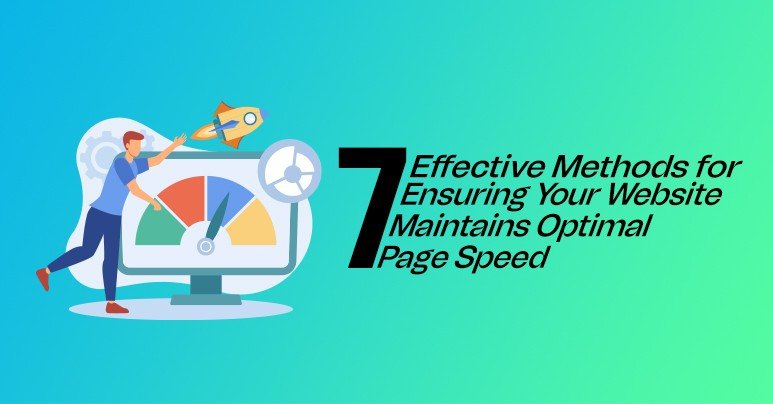In today's digital landscape, where users demand instantaneous access to information, the speed at which your website loads plays a crucial role in its success. Slow-loading websites not only frustrate users but also incur the risk of losing potential customers and negatively impacting search engine rankings. This blog explores seven powerful steps to ensure your website is always optimized for page speed.
Introduction
Page speed refers to the time it takes for a web page to fully load its content. It's not just about how quickly the page initially renders but also how swiftly interactive elements become functional. In essence, page speed is a critical factor that influences user experience, conversion rates, and search engine visibility.
Understanding Page Speed
Page speed isn't merely a matter of convenience; it's a fundamental aspect of user experience and SEO. When a website loads quickly, users are more likely to stay engaged and explore further. Conversely, slow-loading pages frustrate users and increase bounce rates, negatively impacting conversions and search engine rankings.
Factors Affecting Page Speed
Several factors contribute to the overall speed of a website:
- Server Response Time : The time it takes for your web server to respond to a request significantly impacts page speed. Optimizing server response time involves various techniques, such as upgrading hosting plans, minimizing redirects, and leveraging caching mechanisms.
- Image Optimization: Large image files can significantly slow down page loading times. By optimizing images through compression, resizing, and choosing the appropriate file format, you can reduce file sizes without compromising visual quality.
- Minification of Resources: Minifying CSS, JavaScript, and HTML files involves removing unnecessary characters such as white spaces, comments, and line breaks. This reduces file sizes, leading to faster loading times.
- Browser Caching: Enabling browser caching allows certain elements of your website to be stored locally on users' devices after the initial visit. This means returning visitors don't need to re-download the same files, resulting in faster load times.
7 Powerful Steps for Page Speed Optimization
1. Optimize Images
Compress images using tools like Adobe Photoshop or online services such as TinyPNG. Additionally, consider using responsive images to serve appropriately sized images based on the user's device.
2. Minify CSS, JavaScript, and HTML
Utilize minification tools or plugins to remove unnecessary characters and streamline your website codebase. This reduces file sizes and improves load times.
3. Enable Browser Caching
Configure your server to set appropriate caching headers for static resources. This allows browsers to cache files locally, reducing server load and speeding up subsequent page loads.
4. Reduce Server Response Time
Optimize server-side performance by upgrading hosting plans, minimizing database queries, and implementing server-side caching solutions.
5. Use Content Delivery Networks (CDNs)
CDNs distribute your website's content across multiple servers worldwide, ensuring faster delivery to users regardless of their geographic location.
6. Prioritize Above-the-fold Content
Load critical above-the-fold content first to provide users with a fast initial rendering experience. Lazy load non-essential content below-the-fold to optimize perceived performance.
7. Implement Lazy Loading
Lazy loading defers the loading of non-critical resources until they're needed, reducing initial load times and improving overall page speed.
Tools for Page Speed Optimization
Several tools can help you assess and improve your website's page speed:
- Google PageSpeed Insights
- GTmetrix
- Pingdom
Testing and Monitoring Page Speed
Regularly conduct performance audits using tools like Google PageSpeed Insights and GTmetrix. Monitor your website's speed over time and address any issues promptly to ensure ongoing optimization.
Conclusion
Optimizing your website for page speed is essential for providing a seamless user experience, improving conversions, and enhancing search engine visibility. By following the seven powerful steps outlined in this article and utilizing the recommended tools, you can ensure your website consistently delivers fast and responsive performance.





